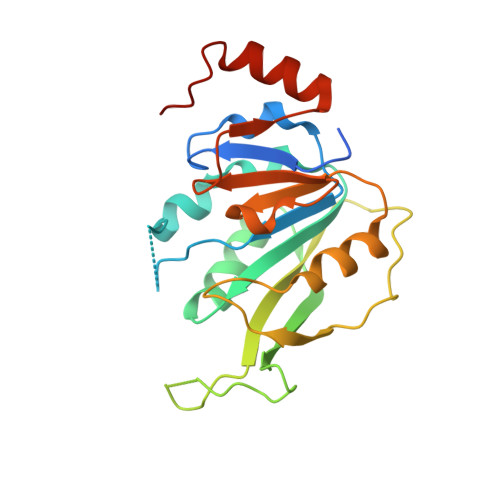Structural insights into the molecular mechanism of the m(6)A writer complex.
Sledz, P., Jinek, M.(2016) Elife 5
- PubMed: 27627798
- DOI: https://doi.org/10.7554/eLife.18434
- Primary Citation of Related Structures:
5L6D, 5L6E - PubMed Abstract:
Methylation of adenosines at the N(6) position (m(6)A) is a dynamic and abundant epitranscriptomic mark that regulates critical aspects of eukaryotic RNA metabolism in numerous biological processes. The RNA methyltransferases METTL3 and METTL14 are components of a multisubunit m(6)A writer complex whose enzymatic activity is substantially higher than the activities of METTL3 or METTL14 alone. The molecular mechanism underpinning this synergistic effect is poorly understood. Here we report the crystal structure of the catalytic core of the human m(6)A writer complex comprising METTL3 and METTL14. The structure reveals the heterodimeric architecture of the complex and donor substrate binding by METTL3. Structure-guided mutagenesis indicates that METTL3 is the catalytic subunit of the complex, whereas METTL14 has a degenerate active site and plays non-catalytic roles in maintaining complex integrity and substrate RNA binding. These studies illuminate the molecular mechanism and evolutionary history of eukaryotic m(6)A modification in post-transcriptional genome regulation.
Organizational Affiliation:
Department of Biochemistry, University of Zurich, Zurich, Switzerland.


















